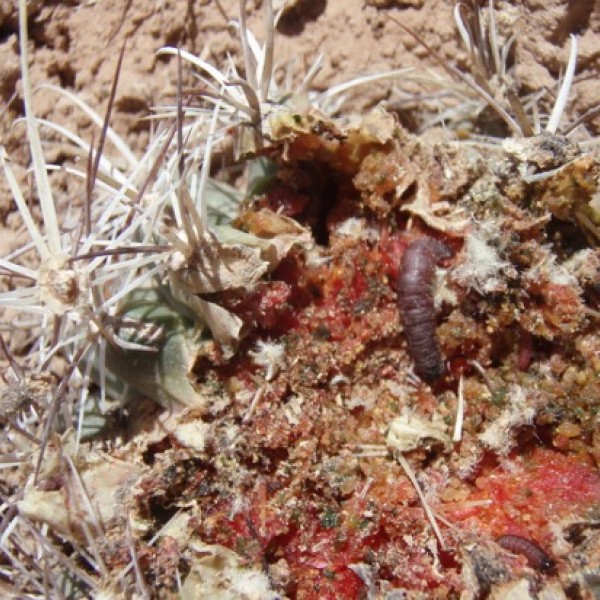
Investigation of Genetic and Environmental Predictors of Susceptibility to Herbivory 2019
Lab
Ecology, Genetics, Plant Systematics & Florisitic
Sclerocactus wrightiae is an endangered cactus endemic to the Colorado Plateau in Utah that has seen considerable reduction in range due to habitat degradation caused by cattle grazing, OHV usage, and other factors. Recently there has been a rapid loss of individuals caused by the presence of a new herbivore, an undescribed moth discovered by biologists at Capitol Reef National Park in 2015. This unusual species-specific herbivory may indicate that the herbivore has always been present, but some unidentified factor has caused a reproductive boom. Alternatively, it may be a novel introduction due to increased range caused by climate change or by some other vector like cattle or humans. Using data collected by the BLM, NPS, and my own field work, I have identified populations with varying degrees of herbivory and mortality from unaffected to large losses of individuals. This creates the ideal system to measure co-factors which can increase susceptibility or resistance to attack. In addition, since its discovery, there have been no observations of herbivory on any other endangered members of the genus. Sclerocactus wetlandicus and Sclerocactus brevispinus are listed as threatened and occur in a similar desert ecosystem in northeast Utah. These closely related species provide the ideal system to measure the role overlapping stresses have on demography, in the absence of the moth. This study combines demographic data, population health data, and genetic variables to identify factors associated with susceptibility to herbivory. Species that are closely related are frequently susceptible to the same herbivore. A phylogeny of the genus will be created using the Hyb-seq protocol to determine relatedness of individuals.
Interns will spend most of their time in the lab at CBG working with S.wetlandicus and S.brevispinus. This work will include entering data, making maps using ArcGIS, extracting DNA from cactus spines, PCR, Gel electrophoresis, and analyzing microsatellite data. While this work will be the main focus of the position, there will be other opportunities to help with other aspects of the project as well including the phylogenetic portion.




